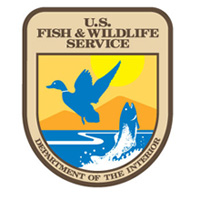The South Farallon Islands
The South Farallon Islands make up just over half the land within the Farallon Islands National Wildlife Refuge. The Farallones’ isolated nature, varied and extensive habitats, and adjacent productive marine environment makes them an ideal breeding and resting location for wildlife. The islands hold the largest seabird breeding colony in the lower 48 United States, including the world’s largest colony of ashy storm-petrels. Approximately half of the world’s population of the ashy storm petrel breed on the South Farallones. The South Farallon Islands also support several marine mammal species along with endemic plant and invertebrate species.
An Ecosystem Out of Balance
The ecosystem on the Farallones is severely out of balance, putting the survival of threatened species and the unique island habitat at risk. The introduction of invasive, non-native house mice to the South Farallon Islands has caused significant disturbance to the islands’ sensitive ecosystem. Non-native, invasive house mice are prolific on the islands and have caused imbalances in the delicate ecosystem. At their annual peak, invasive house mice on the South Farallones are present in extremely high densities, numbering over 490 per acre. House mouse densities recorded from the South Farallon Islands are among the highest for any island in the world. House mice are adversely affecting the native ecosystem of the islands, resulting in impacts to several native species and the federally designated wilderness area. Several species populations, including the rare ashy storm-petrel, Leach’s storm-petrel, Farallon arboreal salamander, and Farallon camel cricket, are at risk if the invasive mice population continues unchecked.
Action is needed before the island reaches an irreversible tipping point that could result in harm to the unique island ecosystem and the loss of the island’s important native species.
The Solution
Point Blue Conservation Science, U.S. Fish and Wildlife Service, and other partners in the conservation community have worked together to find a solution that will allow the islands’ sensitive ecosystem to recover from past human impacts, invasive species, and build resilience to the impacts of climate change. After 15 years of careful study, the U.S. Fish and Wildlife Service has produced one of the most thorough and scientifically rigorous ecological restoration projects to restore the critically important Farallon Islands.
The only way to allow the ecosystem to recover is to ensure 100% eradication of the house mice, because even one pair of mice can recover incredibly quickly. Removing the invasive house mouse will provide safer breeding habitat for Ashy storm-petrel and other species and help protect the islands’ fragile ecosystem from future impacts from climate change. A controlled, short-term and limited use of the rodenticide brodifacoum by skilled experts, using best management practices from other successful eradications world-wide poses minimal risk to the sensitive island ecosystem, marine environment and other non-target resources. Extensive research and field tests have been conducted on the islands, accompanied by lab testing and modeling, to ensure minimal risk.
Has This Been Done Before?
Invasive rodent removals have been successfully completed on nearly 700 islands worldwide, including on California’s Anacapa Island in the Channel Islands National Park, three National Wildlife Refuges in the Pacific, two islands off the coast of Mexico, many islands off the main islands of New Zealand, and recently, multiple islands in the Galápagos Archipelago. Land managers have successfully eradicated house mice from more than 60 islands worldwide. Nearly all of these successful projects utilized techniques like that proposed for the South Farallon Islands house mouse eradication.

